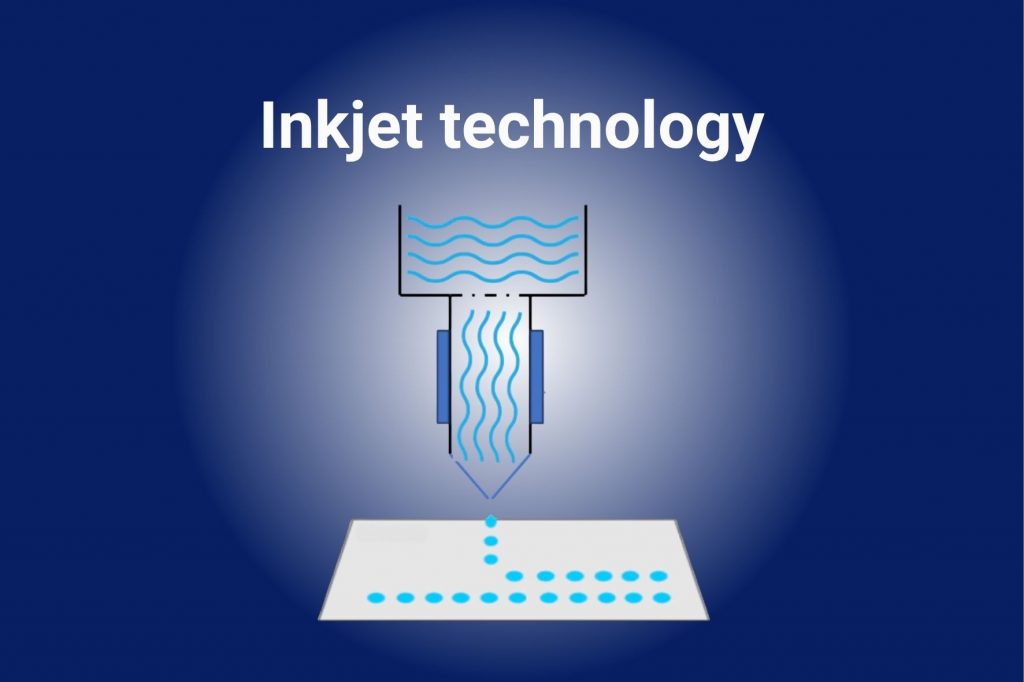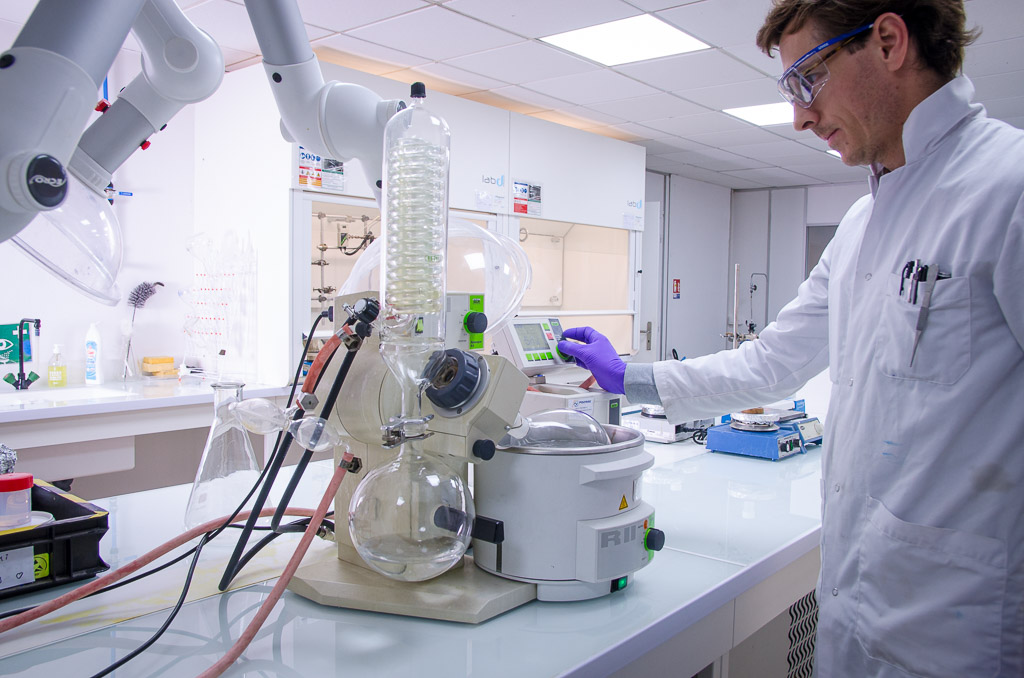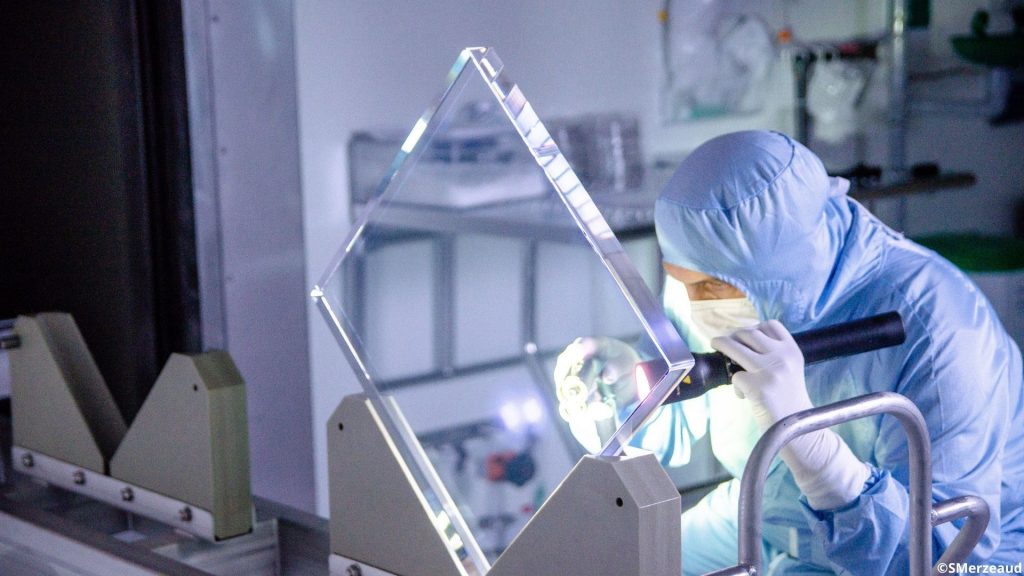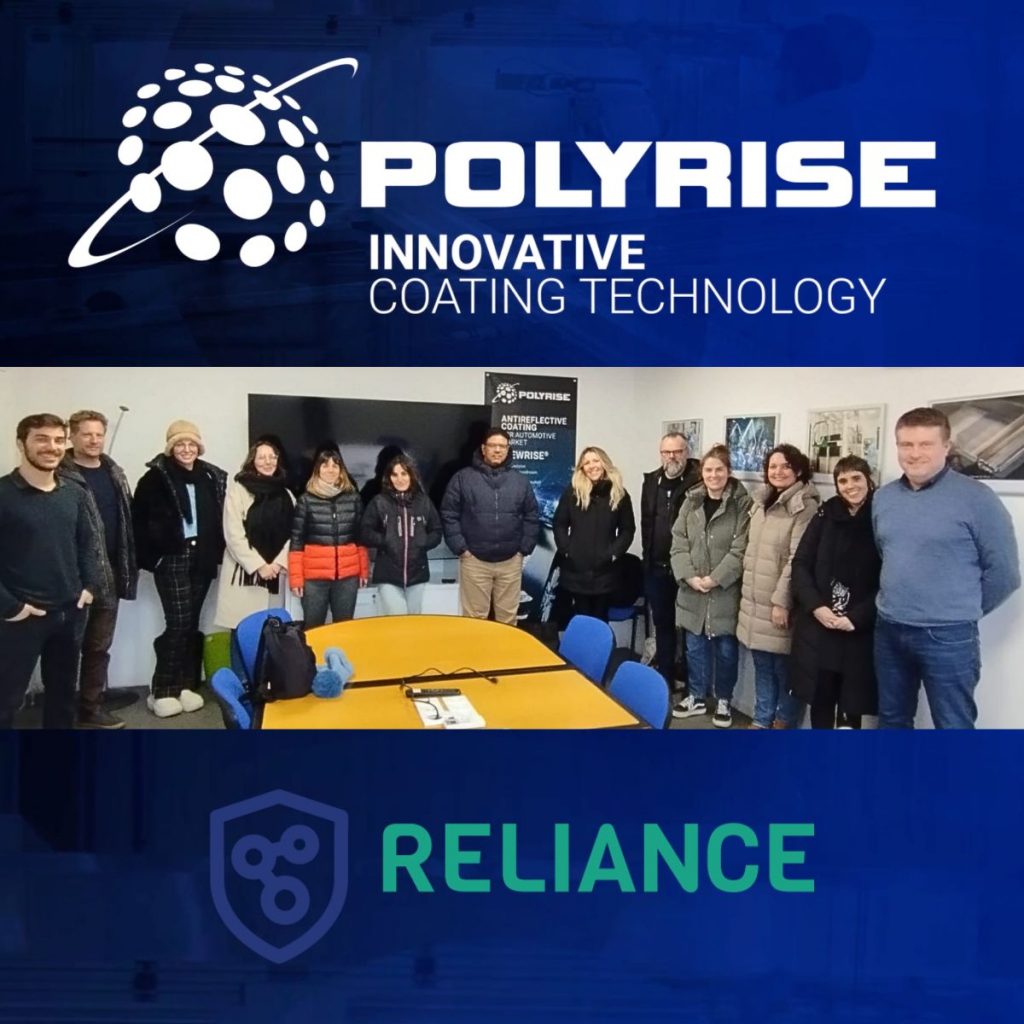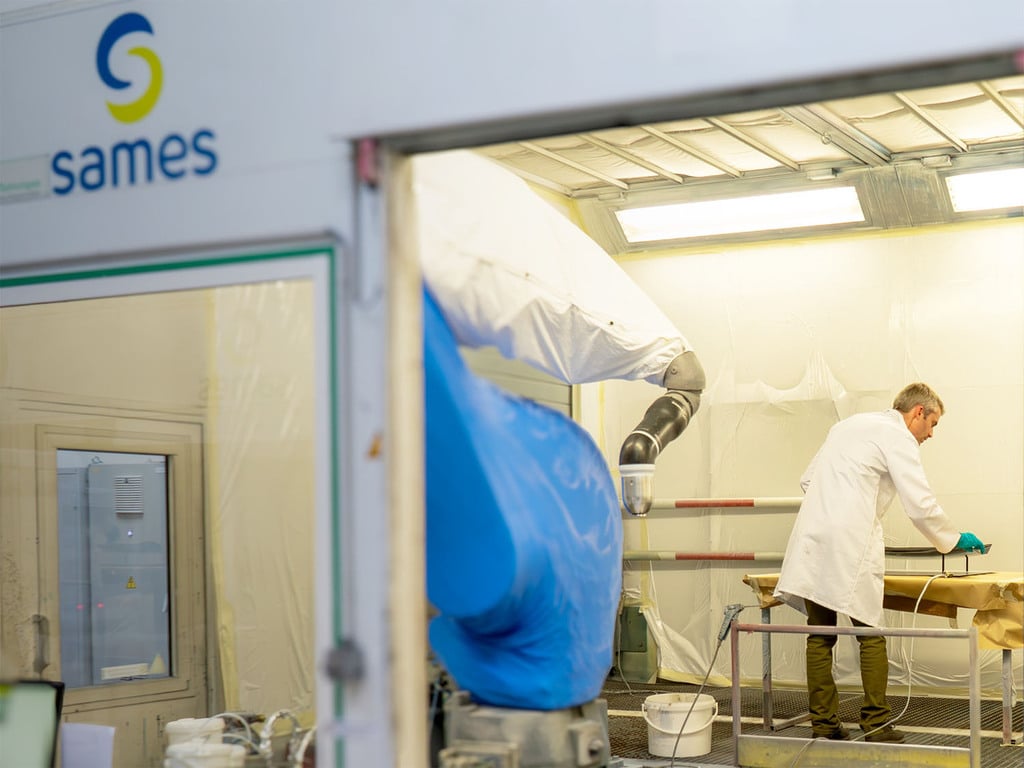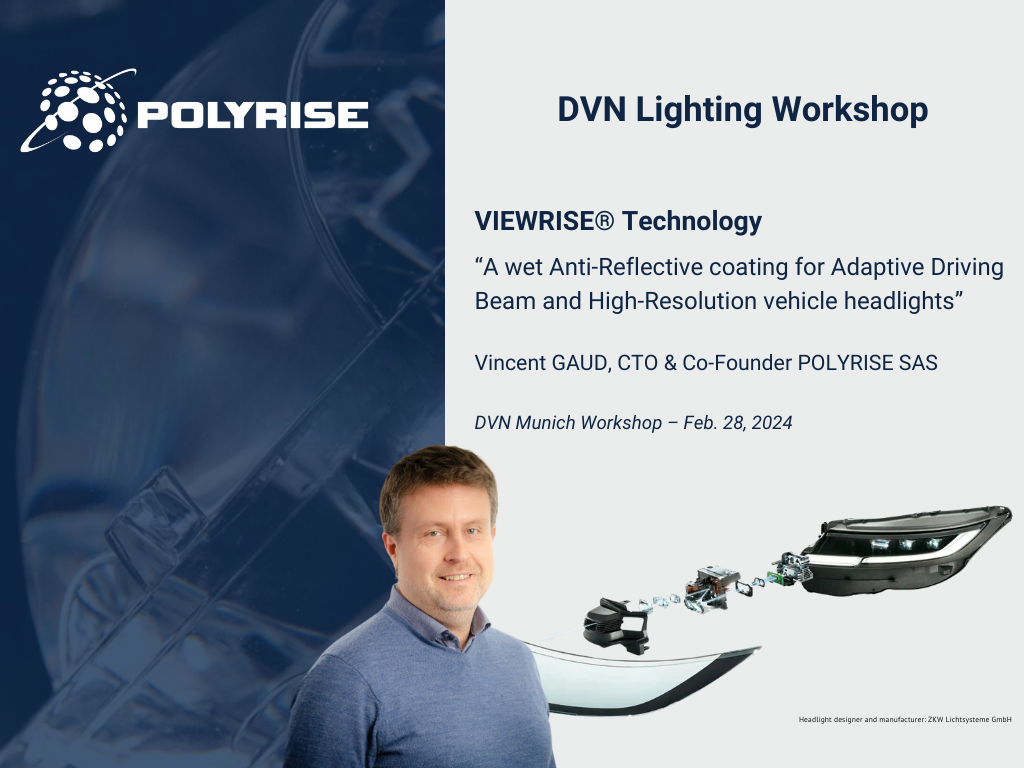Inkjet printing for Sol-Gel coatings is emerging as a promising industrial solution. Longly confined to office printing, Inkjet technology is now opening up new opportunities for the localized deposition of functional coatings. It combines precision, material simplicity, and simplified integration, making it especially relevant to high-tech industries.
POLYRISE, a specialist in optical thin films using the Sol-Gel process, has initiated exploratory work on this technology with a clear ambition: to evaluate the potential of Inkjet printing for its Sol-Gel coatings, aiming to meet the precision, reproducibility, and flexibility requirements specific to its markets.
Why Inkjet? Targeted, clean, and controlled deposition
The fundamental principle of Inkjet lies in the controlled propulsion of micro-droplets of liquid onto a targeted surface. This approach allows for localized deposition, without masking, unnecessary excess thickness, and without polluting the work environment.
Practical applications include: Deposition of a VIEWRISE® anti-reflective coating only on the upper area of a windshield, around cameras or sensors.
Results: Targeted deposition in a specific area, material optimization, reduction of technical constraints, and increased design flexibility.
Encouraging results open up new possibilities
POLYRISE began its work with a single-nozzle platform to evaluate the compatibility or jettability of its Sol-Gel coatings, particularly VIEWRISE® technology, which was applied via inkjet on various substrates such as polycarbonate (PC).
The objective: To obtain an anti-reflective coating with properties similar to traditional methods such as dip-coating, namely controlled reflection, uniformity, and excellent adhesion.
Initial tests have shown that the VIEWRISE® product is compatible with inkjet technology and that the latter allows for excellent deposition control.
As is often the case with advanced deposition technologies, inkjets present certain limitations: sensitivity to nozzle clogging and the complexity of jet stabilization.
To address these challenges, the POLYRISE teams adapt formulations, and finely adjust jetting parameters (voltage, frequency, droplet spacing). These optimizations aim to limit defects such as satellite drops or edge effects.
Towards a controlled scale-up
Building on these initial results, POLYRISE is continuing its work with a head equipped with more nozzles.
This configuration allows it to explore the conditions for moving to larger surfaces and production rates compatible with pre-industrialization.
While the Inkjet technology shows promise, particularly for localized, high-value-added applications, its deployment on large or complex-geometry parts remains a technical challenge. POLYRISE is therefore continuing to analyze the technology’s limitations and the optimal conditions for implementation on an industrial scale.
A Technology under construction, driven by POLYRISE expertise
Today, POLYRISE considers the Inkjet technology a strategic development area, complementary to more established processes such as dip-coating or spray-coating.
The results obtained to date open up encouraging prospects.
By relying on a fine mastery of the material-process couple, POLYRISE is building the foundations of a robust, adaptable and, ultimately, industrializable solution for the localized deposition of functional coatings.

